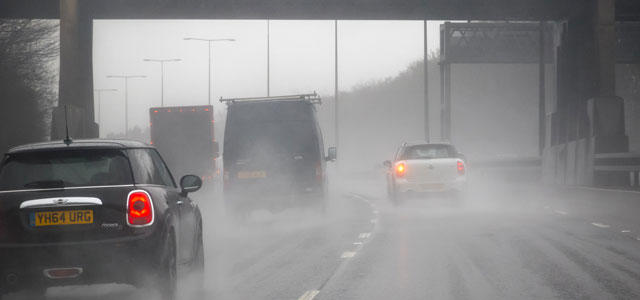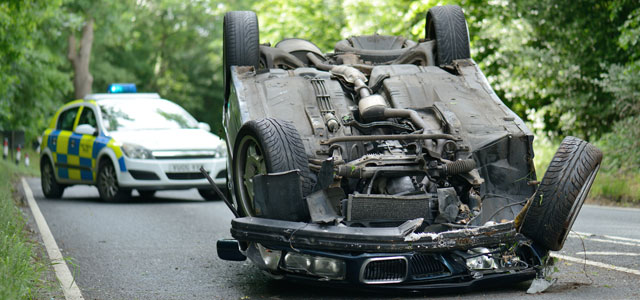Occupational road risk asessments vital to fleet management

Almost everything that you can see and touch, everything you are wearing and just about everything that you are going to come into contact with today will have at some time been transported by road.
You may have arrived at wherever you are just now by company car, van or HGV so let me pose this very simple question; if you drive your vehicle for business purposes do you consider yourself to be a professional driver?
The fact is that if you drive your vehicle for or in connection with your business, then most certainly you should consider yourself to be a professional driver.
Driving is likely to be the most dangerous activity that most of us engage in on a day-to-day basis. At least one-in-three deaths on the UK's roads involve one or more vehicles being driven for work and globally; more than 1.3 million people die on the road every year. Each and every death will be devastating for those involved and for every fatality there are many more serious, life-changing injuries.
For employees that drive either their own, company-owned or leased vehicles on business, managing the associated risks is a fundamental part of both you and the Boards' legal and moral duty of care.
Now ask yourself when you last read the Highway Code? The answer will almost certainly be either, one, when I passed my driving test, or two, when one of my children was taking their driving test.
Often more than five iterations of the Highway Code have appeared since it was last read by active company drivers. How can anyone who is in that position possibly say that they are up to date with, and understand the present rules of the road?

Anyone finding themselves before the courts for a road traffic matter can expect to be examined on their knowledge of the Highway Code. Ignorance is no excuse and if they are found to have contravened, ignored or simply not known about any particular Rule of the Highway Code relevant to the reason why they are appearing, then they can expect to be subjected to the full force of the law.
Within the workplace, quite rightly regulations, processes and procedures strictly govern personal and public safety. Companies have a requirement to ensure employees attend regular training sessions to reinforce their knowledge and professional development.
Rarely are these processes directed at company drivers and driver safety, notwithstanding the fact that the company vehicle, or your own vehicle when being used for business purposes, is your place of work.
I regularly present to organisations, ranging from blue chip companies to small businesses. The one thing they all have in common is that they rely on being able to operate their commercial fleet. Quite simply in most cases, no fleet, no business.
I refer to the armoury that sits outside their offices. This on most occasions results in consternation on the faces of those present. I am of course referring to the car park.

A vehicle is without doubt a killing machine, a lethal weapon. Using the analogy that a weapon alone never killed anyone, it is absolutely true to say that a vehicle alone never killed anyone. It is not until we give a person that weapon and place their finger on the trigger that we have a problem.
We are wholly reliant upon that person being of sound mind, having been trained in the safe operation of that weapon, realising the potential of holding that weapon and being sufficiently trained to make the right decision, every time. Drivers are responsible for killing and injuring people, not their vehicles.
Put a person behind the wheel and we effectively place a finger on the trigger and what happens next is entirely unpredictable.
Because the HSE does not investigate or require RIDDOR type reporting in relation to road collisions, to a large extent they remain invisible to the public. Unfortunately, they also remain largely invisible to the Board.
The issues surrounding Occupational Road Risk are not insignificant. If one employee a day was to be killed in the construction industry, or on the rail infrastructure or in any other form of employment, there would be uproar and work would cease until proper measures were put in place to eradicate that situation.
All too frequently we hand a set of keys to someone, put them in charge of a killing machine and allow them loose on the roads, often without having properly assessed them or having any idea of how they are going to react to situations.
A driving licence check alone is not sufficient.
With needless road deaths and serious injuries occurring daily, surely it is about time that we had a root and branch examination of how this can be alleviated. We should be deploying robust Occupational Road Risk measures and considering the introduction of legislative measures to help ensure the safety of our commercial fleet drivers.
Author: Colin Hartley, Managing Director, DRiiVE Consulting Limited.
Colin Hartley is an experienced fleet risk management consultant having served for 16 years in a busy Police Traffic Department in Scotland where his primary role was to forensically investigate and reconstruct fatal and catastrophic road collisions. Having analysed all the available physical and eye-witness evidence, it was then his duty to report directly to the prosecution authorities and thereafter provide expert witness evidence in Courts of all jurisdictions, including Public Inquiries, High Courts of Justiciary, Courts of Session and Sheriff Courts.
Since leaving the police, he has provided consultancy services to the UK and Eire's leading firms of Personal Injury Litigation Lawyers and most of the UK's leading Insurance companies and investigated in excess of 2000 serious and fatal road traffic collisions.
In addition to analysing the dynamics of the collisions, it is also now his responsibility to examine the training and assistance given by corporate bodies when collisions under investigation involve persons driving in connection with business.
